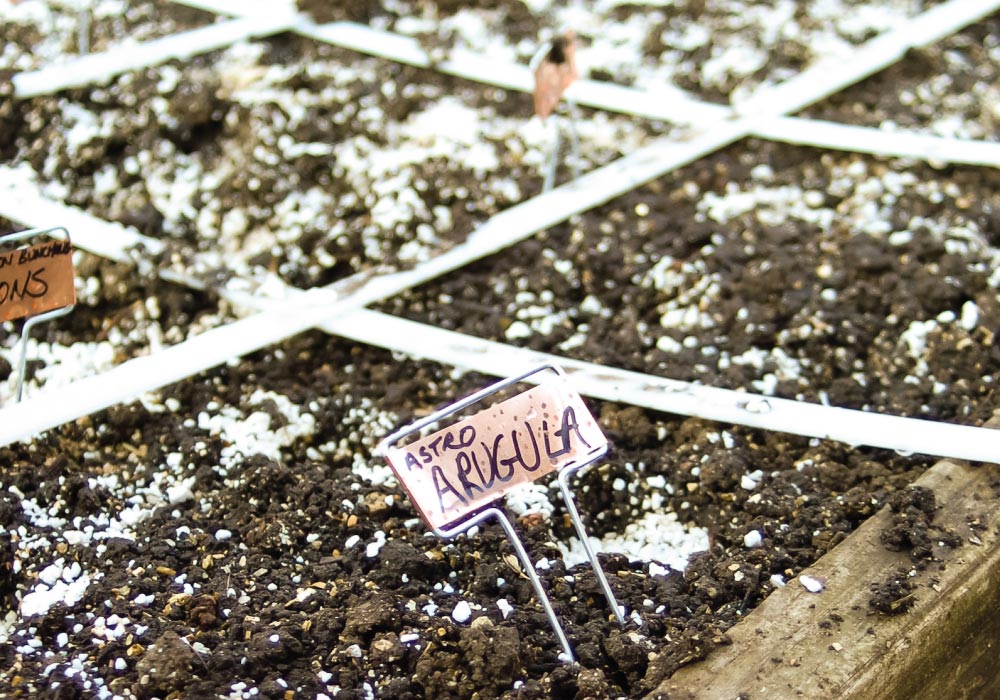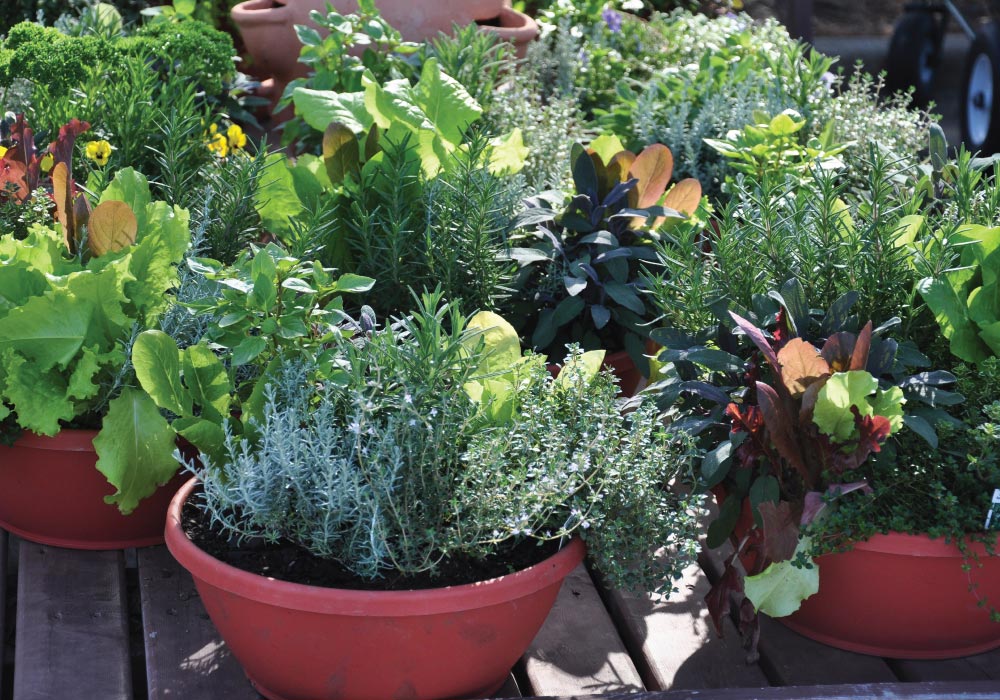
4 Easy Steps to Planning Your Own Home Vegetable Garden
Whether they are from the farmer’s market, a Community Supported Agriculture box or a friend of a friend’s garden, we cannot seem to get enough of garden fresh produce these days. But buying, storing and preparing fresh veggies every week can quickly become tedious and expensive. Seeing as it is National Gardening Week, consider streamlining the whole process by creating your very own home vegetable garden. These helpful tips for growing vegetables in your backyard will ensure that you are up for the task and avoid some of the most common mistakes made by vegetable gardeners.
Planning makes perfect
Right about now, you are having visions of wicker baskets filled with vibrant, bountiful vegetables—much like the image above. And you will get there. But it is important to take it slow and not overwhelm yourself or your garden the first time around.
You do not need a huge plot of land—a simple 10×10-foot space can be both manageable and high-yielding. And you do not necessarily need a multitude of plants to have a fruitful garden. For example, everyone’s favorite backyard plant—the tomato—produces continuously, so you do not need to grow many individual plants. Consider how many and what kind of vegetables your family eats and go from there. And if you do not exactly have a green thumb, stick to the easy plants this time!
Once you know what and how much you want to plant, sit down and plan out your plot. Use graph paper and divide your garden into small square sections—traditionally 12 inches on a side—and dedicate each section to one type of plant; how many plants you grow per section depends on the size of the plant when it matures. This is a simple, effective method of planning small vegetable gardens known as the square foot method. (The photo below is a great example of this method in action.)

One final tip: taller plants like tomato vines do best on the north side of your plot to ensure maximum sun exposure for each and every plant.
Location, location, location
Choosing a location for your garden is a little more complex than you might think. For example, most plants need lots of sun, as in six to eight hours of sun. So it is a good idea to sit out in prime areas of your back—or front—yard to see how much light each section gets throughout the day. Vegetables need level ground to maintain ideal hydration, so uneven plots of land are out. You should also consider your own convenience. For example, the perfect spot for your home vegetable garden is one that is easily accessible and noticeable to you. Many gardeners like to put their garden close to their kitchen for easy harvesting when they cook.
Those who are a little on the forgetful side prefer to plant their gardens in spots they frequent—near the mailbox or in the front yard. And everyone wants their plot to be close to their water source, unless you like to lug heavy watering cans back and forth or drag your hose clear across the yard, that is.
Dirt matters
Time to get a little technical. Knowing what kind of soil you are working with can go a long way towards knowing what kinds of vegetables to cultivate and how to keep them flourishing. If you want to get super technical—measuring pH levels and such—you can take some samples from around your yard and buy a soil test.
However, you can also test your soil on your own: soak your soil with a hose, wait one day and dig up a handful of soil, squeezing it hard. If water streams out, drainage might be a problem in that area, but raised beds are an easy solution. If the soil does not form a ball in your hand, or if the ball crumbles at the slightest touch, the soil is too sandy; if the ball does not fall apart even when you poke it strongly, it has too much clay. Ideal soil will crumble like cake in your hand when poked. The good news: all these soil issues can be solved by integrating organic matter into the soil! The bad news: "organic matter" is a nice way of saying compost, rotting manure, grass clippings and wood shavings.
Once you are ready to dig your beds, till the soil to loosen it, spread your organic matter on top and work it in. Then rake the soil smooth and water the bed. Let that sit for a few days before planting your veggies and avoid stepping on it.

Contain your excitement
Not everyone has the space, time or inclination to plan, plant and grow a whole vegetable garden from scratch—and that is understandable! You can still enjoy your own version of a home vegetable garden through container gardening. Nearly any vegetable that you can think of can thrive just as well in a container as it can in a traditional garden. And a container can be just about anything, as long as it has proper drainage and the size of the plant is considered. Handymen and women often build wood containers; craft folks upcycle baskets, tubs and pails; and everyone else simply buys a couple flower pots.
Just as with a planned and tilled vegetable garden, a container garden has its own set of considerations. Make sure you have done your homework before you hit the gardening center or home supply store.
What are your tips for planning a home vegetable garden? Share this post and add some of your own!
